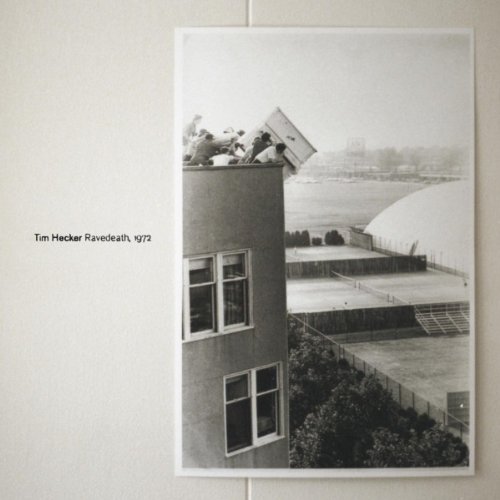
Tim Hecker
Ravedeath, 1972
Release Date: Feb 15, 2011
Genre(s): Electronic, Experimental Ambient
Record label: Kranky
Music Critic Score
How the Music Critic Score works
Buy Ravedeath, 1972 from Amazon
Album Review: Ravedeath, 1972 by Tim Hecker
Excellent, Based on 7 Critics
Based on rating 9/10
Montreal born Tim Hecker is ten years into his recordings as an electronic composer, a landscape noise maker of sorts, who started off under the Jetone moniker where he established himself as an electronic producer. On the five records he has released under his own name, Hecker has sculpted his way into a position as one of the most celebrated and innovative electronic musicians of recent times. Ambient is a lazy term, no doubt about that.
Based on rating 9/10
It’s hard to imagine that 2011 will see many finer releases Within the world of dark ambient, there are few artists whose releases are awaited with the anticipation of Montreal, Canada musician Tim Hecker’s and thankfully, ‘Ravedeath, 1972’ does not disappoint. In fact, from the shimmering pulses of opener ‘The Piano Drop’ to the tripartite ‘Into The Air’’s bleached washes of sound and the spiraling shards of noise which run through ‘Hatred Of Music’, this could well rank as his finest work to date. Sure, it might lack the narrative arc of 09’s ‘An Imaginary Country’, but it’s hard to imagine that 2011 will see many finer releases, of any genre.
Based on rating 8.6/10
There are plenty of synth and drone artists that make epic, transportive music, but one of the unique things about Tim Hecker is his conceptual ability. Each of his records, from the cinematic rush of Harmony in Ultraviolet to the dreamed-up cartography of An Imaginary Country, explores a specific theme, often in great detail. When he talked to us last month about the artwork for his latest LP, Ravedeath, 1972, Hecker mentioned that he'd been consumed with the idea of sonic decay.
Based on rating 7/10
If ambient music is meant to put you to sleep, if it’s supposed to blend into the air and become background noise, if it places calm and placidity over violence and disruption, then Tim Hecker is not an ambient artist. A jackhammer outside your window would be easier listening. His tracks display an incredible range of motions—they swoop, they wallop, they careen and splash, they swell sadly like an ache—but in every case they almost refuse to be swallowed.
Based on rating 3.5/5
Seeing as Tim Hecker has observed that “the album isn’t such a revered artform as it used to be,” and that many an early comment has been made about this album’s striking artwork, and that the album’s name and track titles are such an enigmatic provocation to investigation, we’ll begin — reverently — by judging this piece of art by its cover. It’s a grainy photo of a printout of a photo from MIT’s image library, showing a group of engineering students in the final stages of levering a scrawled sacrificial upright piano off a campus rooftop. This odd ritual, dreamed up in the 1970s, has become a venerable prank (or ‘hack,’ in MIT parlance), an annual event known as The Piano Drop and whose name Tim Hacker, er, Hecker appropriates for the first track of Ravedeath, 1972.
Opinion: Excellent
Not all ambient artists are treated with the reverence usually shown Tim Hecker, but then, his music is much more than just ambient in nature. It is difficult to ignore, not only because it feels so harrowing, but also because it’s so physical when played at normal volume, full of tactile textures and warm, low-end rumble. When the recent news broke about whole flocks of birds dying from airborne trauma blasts, I wondered if they happened to be roosting on top of a venue Hecker was playing, falling from the air as they tried to escape.
Opinion: Excellent
The Canadian sound artist’s most powerful album yet. Chris Power 2011 Over the past 10 years Canadian sound artist Tim Hecker has established himself as a master of atmosphere. Creating his drone-based tempests with a mixture of laptop, keyboard, tape and effects-drenched guitar, his music is often fundamentally serene despite the chill winds whipping across its surface.
'Ravedeath, 1972'
is available now

